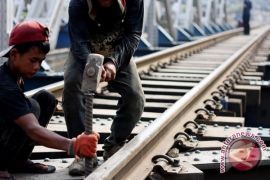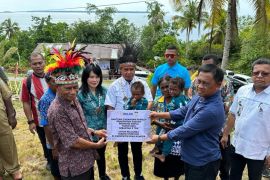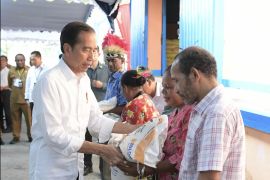"The soil condition in Biak is rocky but with the technology transfer given by the Japanese investor of Omega group has given the local people spirit to plant rice."Biak, Papua (ANTARA News) - A Japanese investor, PT Omega Tekno, is familiarizing the people of Rimba Jaya village in Biak Numfor district, Papua, with rice planting technology and the use of a simple irrigation system, a local official said.
Head of Biak`s animal husbandry and agriculture office, Absalom Rumkorem said, to Biak Numfor people growing rice with the help of technology was a novelty but since the arrival of PT Omega Tekno in Rimba Jaya village, East Biak district, it has changed the perception of the local people.
"The soil condition in Biak is rocky but with the technology transfer given by the Japanese investor of Omega group has given the local people spirit to plant rice. This opportunity should be well responded to by the Biak Numfor district administration," Rumkorem said.
He expected that the technology transfer conducted by PT Omega Tekno in managing rice farms can proceed to the nother villages so as to encourage Biak district administration programs in the areas of local food security.
The office is very grateful for the presence of Japanese investors of PT Omega Tekno which in a short time is able to move Rimba Jaya villagers` interest to plant rice so that the idle lands changed into productive areas.
"Biak district administration and the people support the programs for rice cultivation to encourage the villagers to learn farming to meet families food needs," Rumkorem said.
Meanwhile, the representatives of PT Omega Tekno, Wayan Subangsa, said, to produce rice plants that can be manufactured into rice need the local people`s hard work.
"PT Omega Tekno provide the knowledge about the processing of agricultural land to produce grain rice paddy while the success relies on the willingness and hard work of the local people," Wayan said.
He expected, through the involvement of PT Omega Tekno could help the local people living in various villagers to meet the needs of rice by growing rice on the lands owned by themselves.
(Uu.T.KR-LWA/HAJM/F001)
Editor: Priyambodo RH
Copyright © ANTARA 2011










